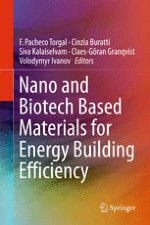2016 | OriginalPaper | Buchkapitel
6. Simulation-Based Evaluation of Adaptive Materials for Improved Building Performance
verfasst von : Fabio Favoino
Erschienen in: Nano and Biotech Based Materials for Energy Building Efficiency
Aktivieren Sie unsere intelligente Suche, um passende Fachinhalte oder Patente zu finden.
Wählen Sie Textabschnitte aus um mit Künstlicher Intelligenz passenden Patente zu finden. powered by
Markieren Sie Textabschnitte, um KI-gestützt weitere passende Inhalte zu finden. powered by
